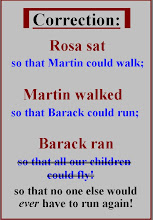 As in revolutionary times, the rattlesnake is again a symbol of popular resistance to intrusive authority; likewise, the motto, "Don't tread on me." Displayed at the left is a reptilian rejoinder to calls for draconian sacrifice in the name of "saving the planet."
As in revolutionary times, the rattlesnake is again a symbol of popular resistance to intrusive authority; likewise, the motto, "Don't tread on me." Displayed at the left is a reptilian rejoinder to calls for draconian sacrifice in the name of "saving the planet."This correspondent believes that the theory of anthropogenic global warming (AGW) will likely go the way of the aether, that it will be remembered as the most spectacular example of model failure in physics since William Thomson (later Lord Kelvin) first calculated the age of the earth to be less than 100 million years - see, for example, J. Burchfield, Lord Kelvin and the Age of the Earth (1990) or, more recently, Professor William Happer's testimony to the US Senate Committee on Energy and Public Works in February, 2009.
The problem with AGW is not that the experts are probably wrong. In one way or another all scientific theories are wrong, the only questions being to what degree and the time required for the deficiencies to out. Like life itself, scientific theories are products of descent with modification. Indeed, the scientific method — the articulation of hypotheses, their experimental evaluation and their inevitable reformulation or replacement by ideas that better iterate to the data — is nothing more than variation and selection, the principle drivers of organic evolution. Nor is the problem that proponents of AGW sometimes cut corners. Scientists are attached to their ideas, which they tend to regard in much the same way that the rest of mankind thinks of its children. To the contrary, the problem with AGW is that that it is science conflated with ideology, historically a toxic brew, and that it has been seized upon as a device for promoting agendas that have little to do with science and everything to do with the acquisition of money, power and influence. That much of the scientific community has either endorsed these efforts or watched mute from the sidelines is a stain on the profession. More practically, should ice, not fire, be in our future, the consequences of carbon abatement will be death and suffering on a planetary scale.
Larry Niven, Jerry Pournelle and Michael Flynn may well have called the shot nearly twenty years ago in Fallen Angels — a tale set in a time of future solar inactivity and global cooling, when advancing glaciers grind cities to rubble even as the Green Gestapo enforces stringent laws designed to curtail carbon emissions. Fallen Angels is arguably not on a par with the best of its authors' productions: Ringworld, The Mote in God's Eye, etc. But, given the empirical correlation of variations in the sun's output and terrestrial climate and the delayed (possibly aborted) start of solar cycle 24, it may nonetheless prove remarkable for its prescience. The precautionary principle cuts both ways. Dig it!
 |
| Fallen Angels — a parable for our times? |













No comments:
Post a Comment